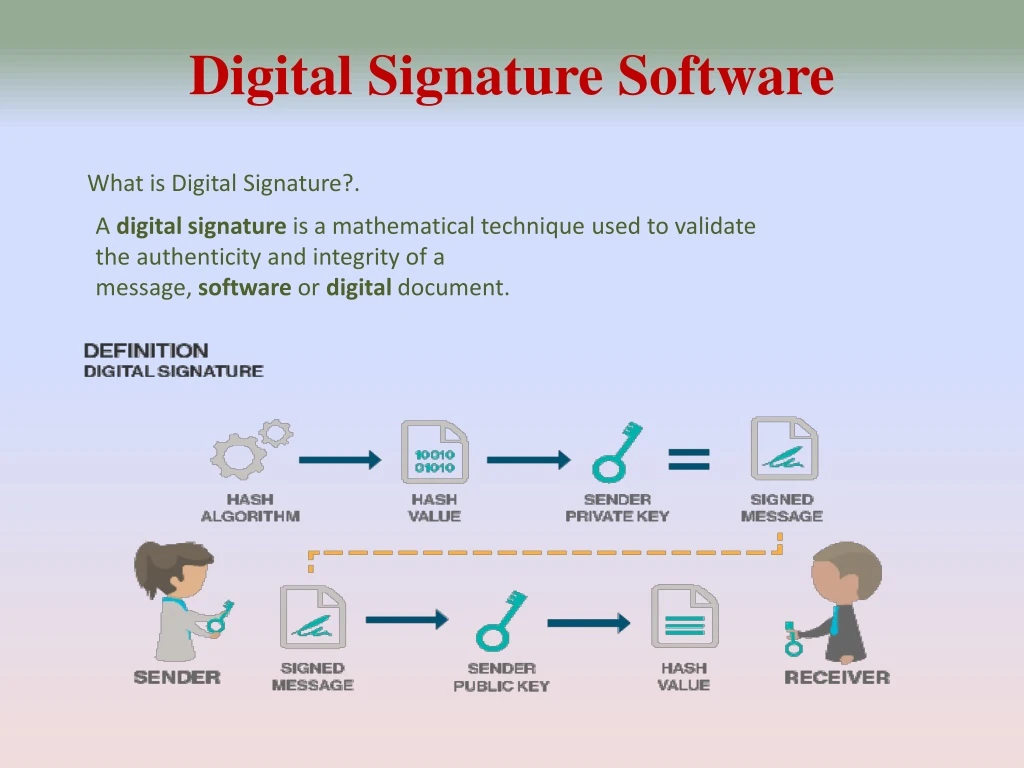

With KSI, a unique fingerprint of each document is generated and then published in a way that allows you to verify with absolute certainty that your document: And unlike PKI, KSI seals become stronger over time because KSI is based on blockchain technology. KSI is not based on certificates and keys, hence keyless, and doesn’t rely on third parties.

As an analogy, a thief trying to break into someone’s bank account using their ATM card would have an increasing chance of success if the ATM didn’t limit them to three attempts to guess the 4-digit PIN. This is a well-known and relatively straightforward way of sealing documents.Ī notable disadvantage of PKI is that the seal becomes more vulnerable to forgery over time, as the possibility increases that someone could mathematically break the seal. These keys and certificates can be traced back to the trusted party, and trustworthiness is assigned to that party.

The issued keys and certificates are used to seal documents. Ties who want to protect the integrity of their documents. PKI works on the model of a trusted party that issues certificates and keys to par Scrive has chosen KSI rather than PKI (Public Key Infrastructure), which is the most common method. Once a document has been sealed with KSI, you can verify its integrity immediately, a year later, even decades later. Guardtime uses a method called Keyless Signature Infrastructure (KSI), which uses blockchain technology. To ensure integrity, as soon as a document is electronically signed, Scrive seals it with a digital signature in partnership with our supplier Guardtime. the document you’re presenting isn’t a forgery.no one has altered the original document.This makes the integrity aspect even more important when you use electronic signatures.ĭocument integrity means that in the event of a dispute, you can prove that: You can retain a paper original, but anyone could easily manipulate an electronic document and claim it’s the original. DOCUMENT INTEGRITYįor both paper and digital documents, integrity protection is a key requirement. This third requirement, document integrity, is why you need a digital signature. If someone challenges the validity of a signed document, you must be able to show evidence of: the signing party’s intent to enter into a binding agreement, the signing party’s identity and the document’s integrity, i.e., that it has not been altered. To conform with global contract law, a signature, whether electronic or on paper, must fulfil three key requirements. What makes an electronic signature legally binding? These levels are explained further in the Scrive Trust Center. Because the legal effect of these methods can vary greatly, factors such as cost of implementation, ease of use (customer experience), legislation, company policies and assessed business risk usually determine which one to use in a given situation.Įven in the category of electronic signature, there are different levels, and which level is appropriate for a given situation will depend on the same factors mentioned above. Not all of these will qualify as an electronic signature, and which method to use depends on the situation. authenticating your identity using a means of electronic identification (eID).making a sound or video recording of a verbal acknowledgment.clicking and/or drawing your signature to sign an electronic document.clicking a button to agree to on-screen text, such as terms and conditions.There are various methods for expressing agreement, consent and acknowledgment in a digital environment, including: a method for securely archiving your documents.As with our own human fingerprints, it’s impossible for any other document to have that same digital signature. It’s like a fingerprint that is unique to that document. Rather, it’s about document integrity, which means that in the event of a dispute, you can prove that: (1) no one has altered the original document, and (2) the document you’re presenting isn’t a forgery. What is a digital signature?Ī digital signature, also referred to as “sealing a document”, is not a signature in the legal sense.
DIGITAL SIGNATURE HOW TO
Above all, you’ll learn how to ask e-sign providers to be specific regarding what their services include. You’ll learn the key features of each term, examples of what they encompass and how they can be applied. In this guide, we’ll walk you through the differences between digital and electronic signatures to help clear things up. It’s very easy to confuse digital signature and electronic signature.


 0 kommentar(er)
0 kommentar(er)
